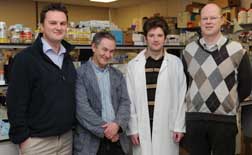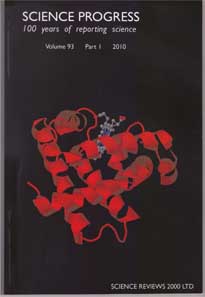CIT’s Bioinformatics Group News
Published on: Sunday, 07 March 2010
 |
 |
While Biotechnology and ICT were perhaps the hottest buzzwords of recent times; ‘the new kid on the block’ - Bioinformatics - combines ICT and biotechnology within a new biology based information science; one in which high end computing is applied to identify new genes, predict new protein structures and even to design new and improved drugs.
The group which was formalised this year with the support of Michael Loftus, Head of the Faculty of Engineering and Science; and Hugh McGlynn and Jim O’Dwyer (Heads of Biological sciences and computer science respectively), has already had its first joint paper published in the March issue of the scientific journal Archives of Microbiology. In this paper Sleator and Walsh provide a comprehensive overview of the power of combining skills in biology and computing to predict the function of newly identified proteins, simply by analysing the DNA and protein sequence data. Furthermore, an article by Sleator on how bioinformatics can be used to predict evolutionary trends recently made the cover of the journal Science Progress with a computer predicted image of myglobin (pictured above).
Another significant focus of the group, and the subject of John Carroll’s MSc project, is the development new algorithms to help researchers to identify important gene sequences from the huge amounts of data being generated by large scale sequencing projects; such as the human microbiome project – which aims to identify all the genes of all the microbes in the body (which, believe it or not, outnumber our own human cells by a factor of 10!).
The group is also at the prototyping stage for a new software tool that allows researchers to manage bioinformatics research in a secure and auditable computing environment that is compliant to FDA standards. This research stems from requirements gathering from over 100 bioinformatics active researchers. With this software biotechnology professionals will be able to construct workflows and research outputs for genomic research on any computer or mobile device that is connected to the Internet.
In addition to being an active research team, the CIT bioinformatics group is also actively involved in progressing the teaching of this new discipline within the Institute – one of the major movements in this direction is the establishment of a new taught masters (MSc) in computational biology; an interdisciplinary field in which students will be exposed to the most up-to-date training in computing and biology.






